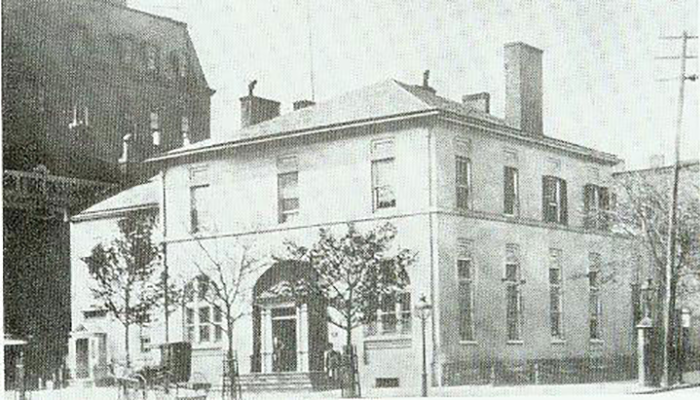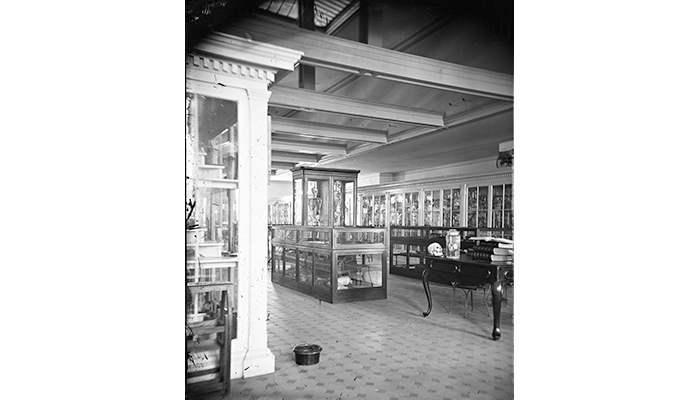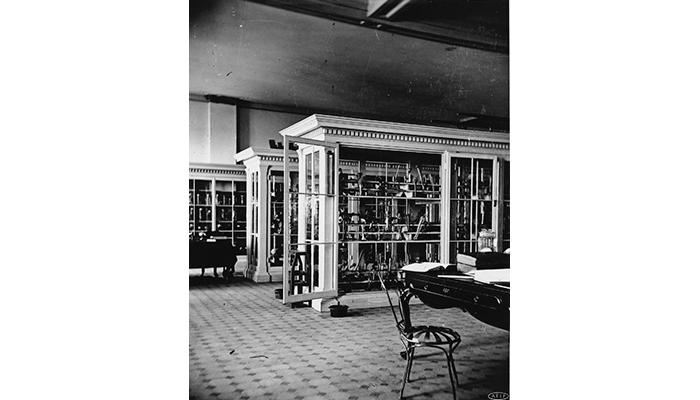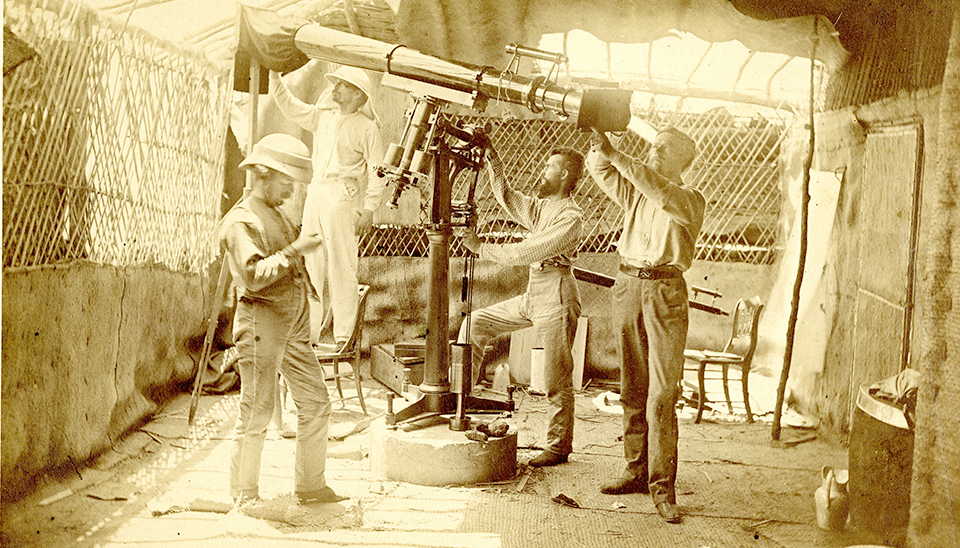On May 21, 1862, Army Surgeon General William Hammond issued Circular No. 2: "As it is proposed to establish in Washington, an Army Medical Museum, Medical officers are directed diligently to collect…all specimens of morbid anatomy, surgical or medical…; together with projectiles and foreign bodies removed, and such other matters as may prove of interest in the study of military medicine or surgery."
158 years later, the Army Medical Museum is still collecting, researching, and informing on the study of military medicine under the name the National Museum of Health and Medicine.
During the initial formation of the museum in 1862, specimens were kept on the desk of the museum's first curator, Brigade Surgeon John H. Brinton. The desk was in the Surgeon General's office in the Riggs Bank building at the corner of President Place (now Pennsylvania Avenue) and 15th Street, N.W., Washington, D.C. Brinton writes, "The beginning of the Museum in August 1862 was very modest, consisting of three dried and varnished specimens placed on the little shelf above the ink stand on the desk." As the collection grew, shelves were added to Brinton's quarters in the Surgeon General's office.
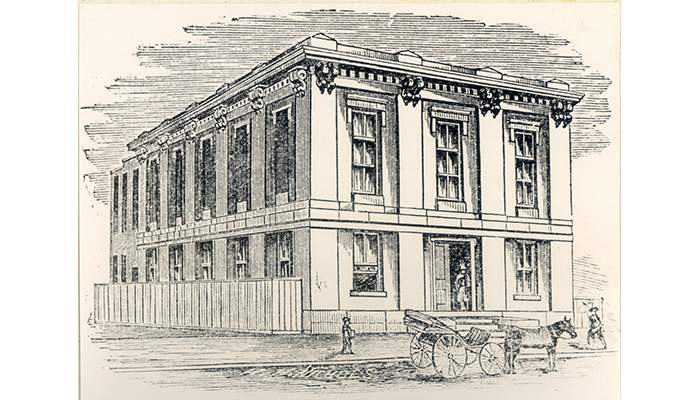
The third home of the Army Medical Museum on H Street in Washington, D.C., previously known as "Mr. Corcoran's School House." Engraving by H.H. Nichols, a member of the museum staff, circa 1863. (Reeve 32789)
Eventually, the Surgeon General's office could not hold the growing collection, and the museum was forced to relocate twice in 1863. First, to a building at 180 Pennsylvania Avenue, N.W., and second, to a building on H Street, N.W., between 13th and 14th Streets. This H Street building, also known as "Mr. Corcoran's School House," was the third home of the museum from 1863 to December 1866.
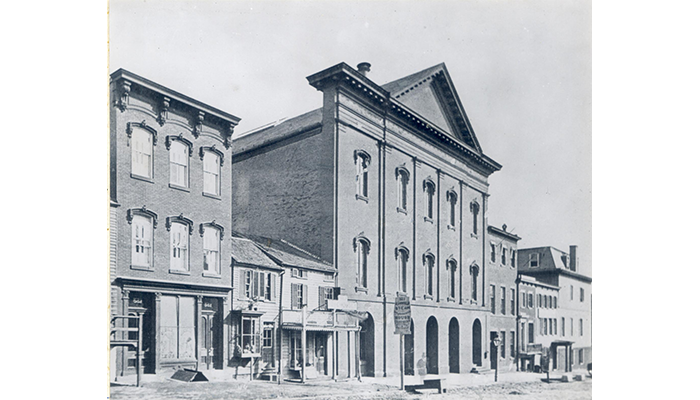
Fourth home of the Army Medical Museum at Ford's Theatre, formerly 454, now 511 10th Street, N.W. 1866. (Reeve 32782)
While housed at the Corcoran building, the museum changed curators, reorganized collections, and introduced new avenues of study like microscopy. Through this growth and increased activity, the museum looked toward a new home. Perhaps the most intriguing of the museum's locations, the fourth home was at Ford's Theatre, where President Abraham Lincoln had been shot a year previous to the move.
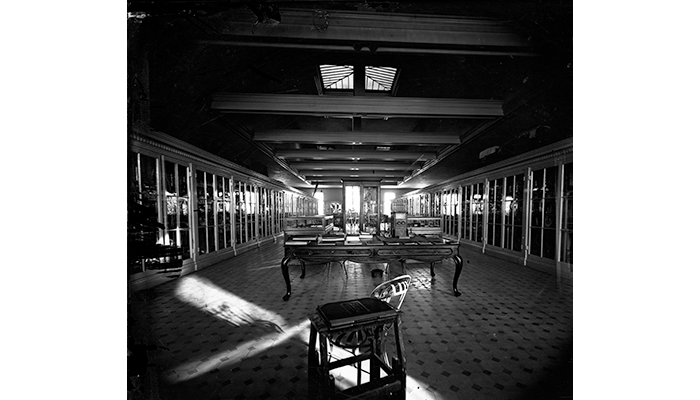
The three floors of Ford's Theatre were refitted for the museum and the Surgeon General's office, which included the pension office. The third floor became an exhibition and collections storage space for the museum from 1866 to 1888. In this space, the collections were divided into six groups: surgical, medical, microscopical, normal human anatomy, comparative anatomy, and miscellaneous.
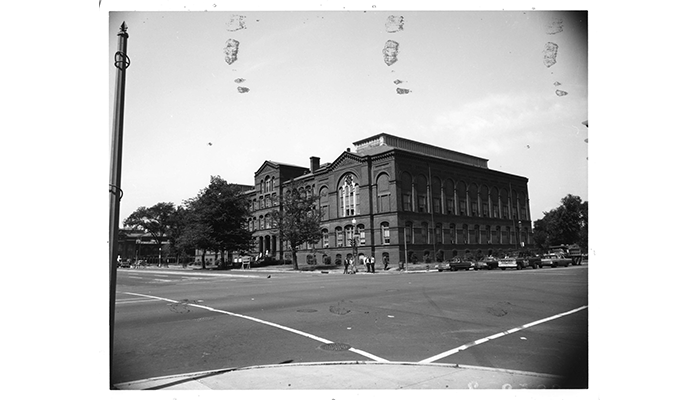
The fifth and seventh home of the museum at the Old Red Brick located on the National Mall at 7th Street and Independence Avenue, S.W. (NCP 3064)
On Feb. 15, 1888, the museum moved once again to provide more space for its now 27,000 objects. The fifth and seventh home of the museum, known as the Old Red Brick and designed by the architect Adolph Cluss, was built specifically for the purpose of housing the museum and accompanying library. The new building was made of red brick and located on the National Mall (currently the location of the Hirshhorn Museum and Sculpture Garden) at 7th Street and Independence Avenue, S.W. Here, the museum was housed for its longest stay from 1888 to 1946, and 1962 to 1968 with a brief stint in Chase Hall, the sixth home of the museum, across Independence Avenue from 1946 to 1962.

The eighth home of the museum at the Armed Forces Institute of Pathology building on the campus of Walter Reed Army Medical Center. (OHA)
During its time at the Old Red Brick and Chase Hall, the museum became a division of the new Army Institute of Pathology, later the Armed Forces Institute of Pathology (AFIP) in 1949. In 1971, the museum moved, for its eighth time, into the AFIP building at Walter Reed Army Medical Center, and stayed until 2011.
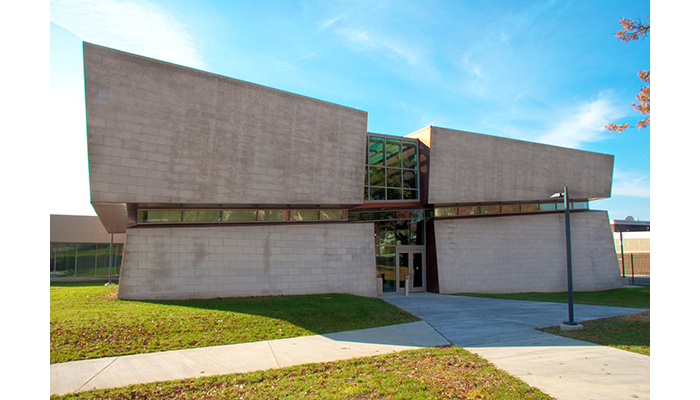
Current and ninth location of the National Museum of Health and Medicine as of 2011 at 2500 Linden Lane in Silver Spring, Maryland.
In 2011, the museum moved to its current and ninth location in Silver Spring, Maryland. Though in a new setting, and now a part of the DoD's Defense Health Agency as of 2015, the museum sustains its continued role of preserving, researching, and presenting collections to highlight the impact of military medicine and its connection to civilian medicine.
Resources
Henry, Robert S. The Armed Forces Institute of Pathology: Its First Century, 1862-1962. Washington, D.C.: U.S. Government Printing Office, 1964.
Rhode, Michael G. "The Rise and Fall of the Army Medical Museum and Library." Washington History 18, no. 1 (2006): 78-97.
Stone, Paul. Legacy of Excellence: The Armed Forces Institute of Pathology, 1862-2011. Fort Detrick: Borden Institute, 2011.
Relevant Links:



